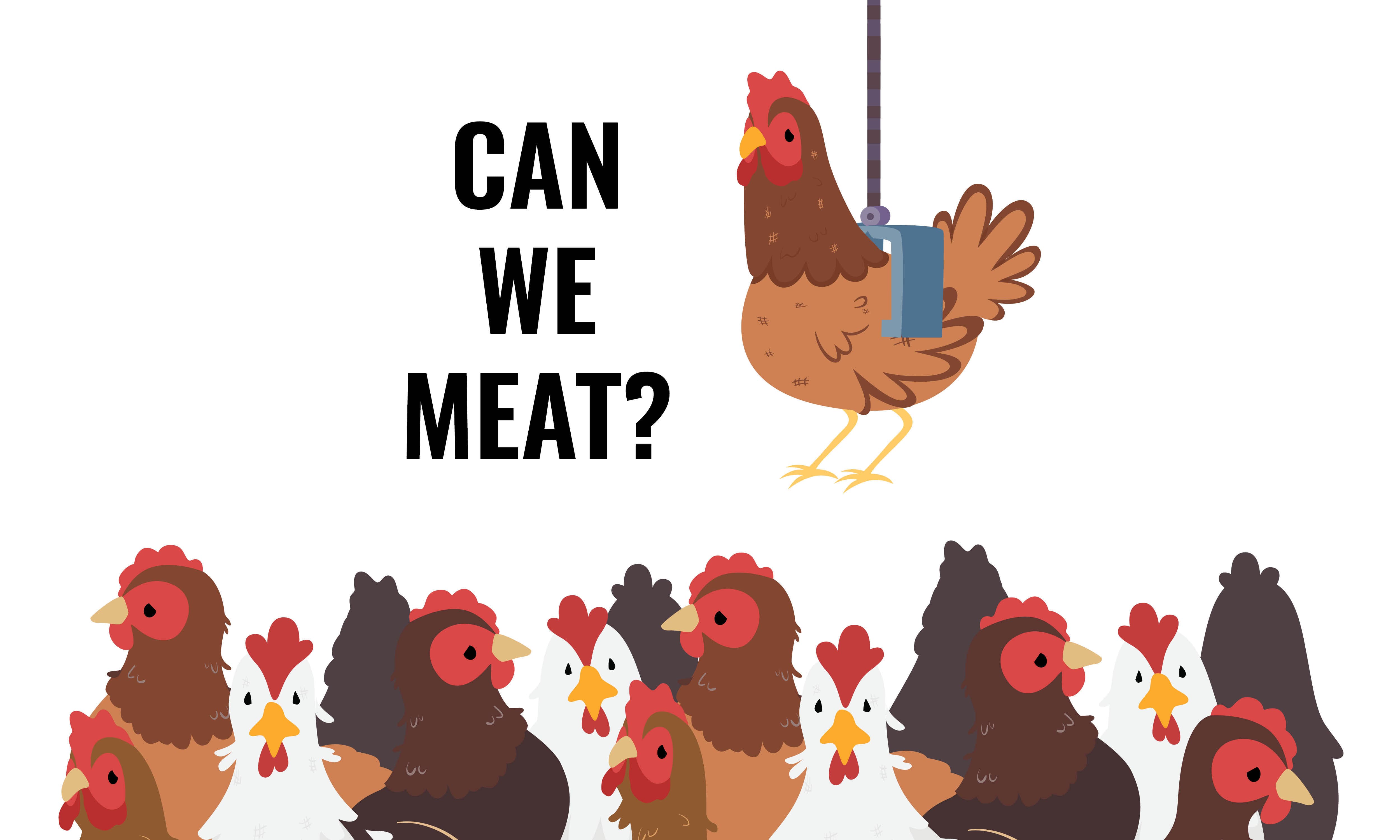
If you’ve ever ordered a chicken karahi in Pakistan you know restaurants offer two types of chicken, desi on the one hand and broiler on the other, or just to complete the antonym, vilayati. I can attest to the fact that desi murghi is more scrumptious and desi eggs bigger and browner. A qualitative win.
But quality can never compete with quantity, as thousands of poultry farms full of broiler chicken can testify. Broiler chicken is mass produced only for slaughtering, held in captivity and given specialized feed to fatten the bird up in the least amount of time possible, and on the least amount of feed possible.
The result is millions of identical looking chickens all over the country; the colour too pale, the meat too soft, the eggs too white, the taste too bland, the adjectives too many.
So why are there so many of them? Because they’re cheaper to produce. Chicken economies of scale.
It used to be that a vegetable curry - of potatoes, spinach, cauliflower, etc - would be decorated with some meat/bone broth to add that wow factor instead of just asking the wife to save money and make yet another potato curry — a request that could be grounds for an estrangement, separation and possible divorce. Then along came broiler chicken to save marriages in working-class households; meat so cheap that vegetables are more expensive to buy these days.
Rearing desi murghi is a slower, small-scale and painstaking job. The feed is also pricier. The age of maturity is longer which calls for more supervision to control disease. The owner might even get attached to the chickens, name them, let them wake him up every morning and keep counting them before they hatch. Few people want to do that anymore.
But it’s not just the economy of poultry farming that has changed, broiler chicken has affected our cuisine too.
Chickens now attend all our weddings and funerals. They are in our fridges, deep freezers and microwaves. They are in all-you-can-eat offers. So chickens are populist but gentrified too. They are Yasir Broast but they are KFC too. There are chicken fajitas but there is chicken nihari too (I will never forgive you for this, Islamabad). Broiler chicken is ubiquitous, it’s in everything, maybe even the glass of water you’re about to drink.
But while some people eat a truckful of chickens every day, there are, obviously, detractors. Popular culture demands detractors.
There are uncles who swear that broiler chickens are given growth hormone injections every day. They’ll claim to have seen the chickens injected in front of their own eyes, which is fowl play. You’d think with all this doping going on in poultry, a chicken would have won the Tour de France by now.
The uncles also warn you of the swine flu, SARS, Congo virus, mumps, AIDS and worse of all, acne, that you can contract from eating broiler chicken. An uncle will claim he contracted all of these at the same time but now he only eats fish and is healthier already.
Then there are the breeders who claim it’s generations of selective breeding that has made chickens mature to twice the previous size in half the time. So what if they grow three eyes and buck teeth or are so fat that their legs collapse under their own weight. Nothing to do with artificial feed.
Breeders also had on their side former chief justice Saqib Nisar, who declared early last year that broiler chicken in Pakistan was, in fact, finger licking good and safe to eat.
So which side wins in the chicken debate? Is chicken evil or good? The truth, like a good Zinger patty in the middle of two buns, lies somewhere in between.
Processed meat comes with more warnings than broiler chicken. Even entirely hormone-free red meat is considered carcinogenic whereas white meat, or the pale yellow meat of broiler chicken, isn’t. Though science is fallible. If processed, microwaved, red, fried and leftover meat all cause cancer then by my calculations I died five years ago and am typing this from the grave.
And even if some growth hormones have been injected into a chicken, at least it’s not donkey meat. Or dog meat. That’s one positive for the religiously inclined.
But whether fowl, goat or donkey, the meat industry is flourishing in Pakistan. If you don’t believe me, ask Hamza Shahbaz. Hamza Poultry is the only business that hasn’t put a Sharif in prison.
The writer and journalist graduated from the Lahore University of Management Sciences with a degree in economics.
This was originally published in the March 2019 issue of the Herald. To read more subscribe to the Herald in print.










